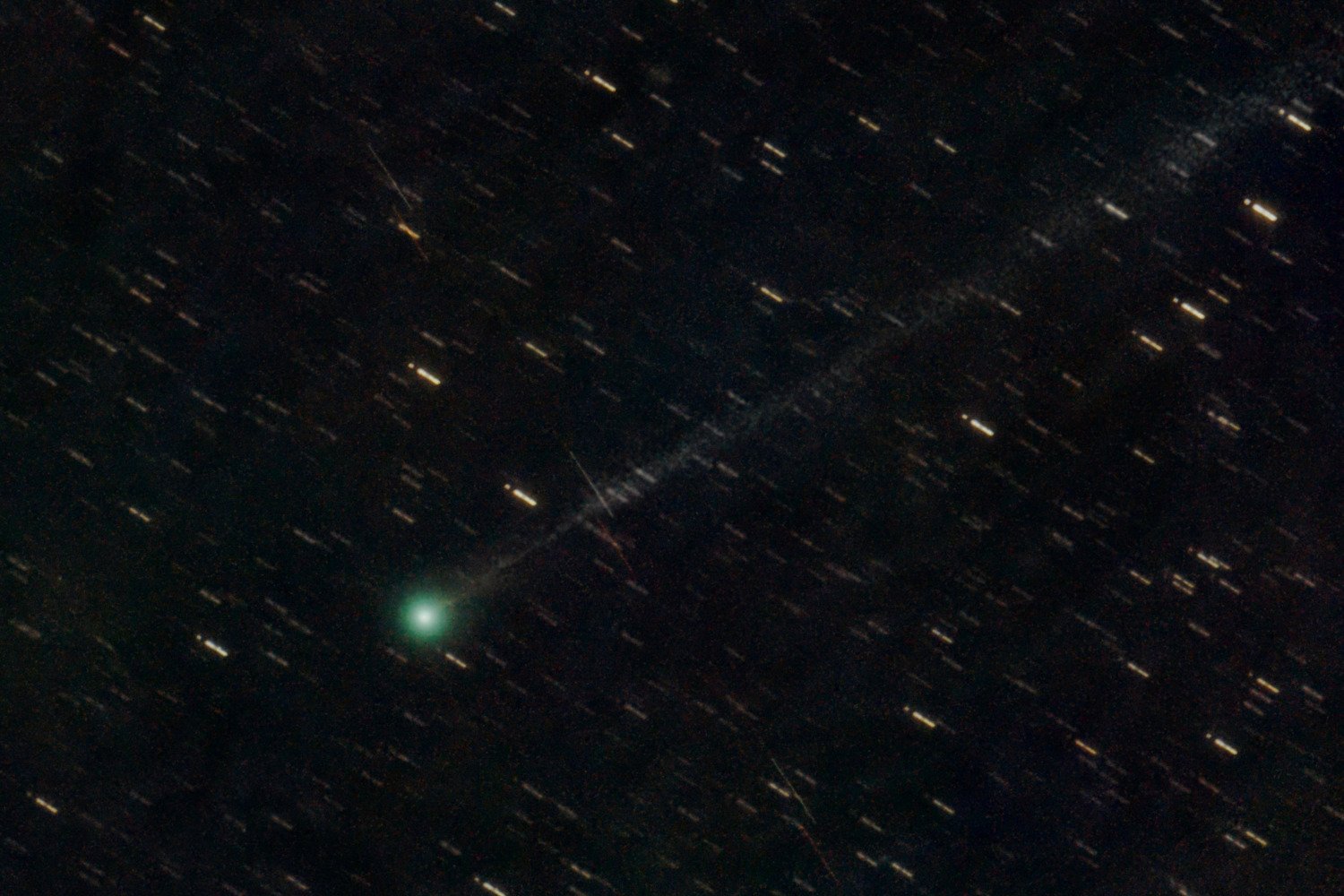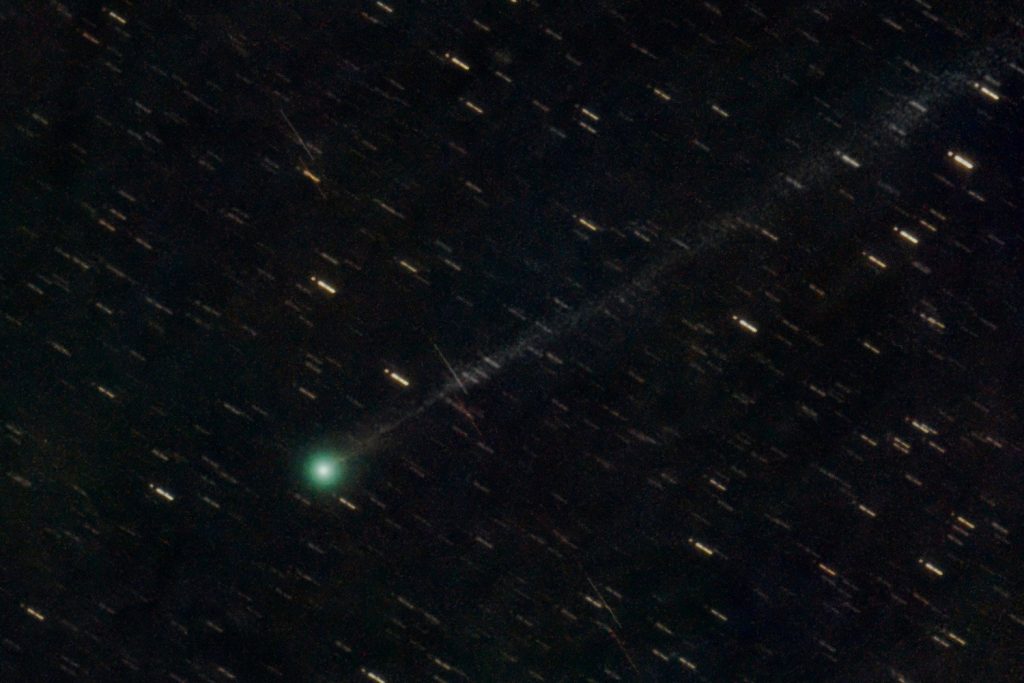A recently discovered comet is currently gracing our morning skies, with its signature green glow and long tail trailing behind. Comet SWAN25F is speeding toward the Sun for a dangerously close approach, which might either destroy it or make it visible to the naked eye. In the meantime, the bright comet can be spotted with a telescope or a pair of binoculars as it streaks across the sky.
Astronomers discovered the comet in images captured by the SWAN instrument aboard NASA’s Sun-watching SOHO spacecraft. On April 8, the Minor Planet Center designated the comet C/2025 F2 (SWAN), and sky watchers were eager to spot it. Here’s how you can enjoy a glimmering view of the comet before it reaches its closest approach to the Sun during the early days of May.
New bright comet SWAN25F
2025-04-06 UT 2.50
LRGB 16/5/5/5 min 11″/2.2 RASA QHY600
Michael Jäger, Gerald Rhemann pic.twitter.com/FJuwRVGMd5— Michael Jäger (@Komet123Jager) April 6, 2025
How to see Comet SWAN
The comet is visible in the morning sky, and can be spotted in the east in the hours just before the twilight of dawn begins to take over.
Comet C/2025 F2 is inside the Great Square of Pegasus, a constellation in the northern sky named after the winged horse in Greek mythology, and it’s moving toward the Andromeda constellation, according to EarthSky. In order to view the comet, look toward the star Alpha Andromedae, the brightest star of the four points that make up the Great Square in Pegasus. On April 13, the comet will pass close to the bright star.
The comet is currently at a magnitude of +8, making it too faint to see with the naked eye. You’ll need a telescope or a pair of binoculars to catch a glimpse. Be sure to wake up before morning twilight washes it from view. Despite its small size, the comet should appear as a green sphere with a faint tail trailing behind.
A race to the Sun
The comet is currently racing toward greatness or doom, depending on the outcome of its close encounter with the Sun.
Comets are the frozen leftovers from the formation of the solar system, and are made up of material such as dust, rock, and ice. As comets orbit closer to the Sun, they heat up and spew gases and dust. That’s the glowing head that we see, which can be larger than most planets. Then the remaining dust and gas form a long tail, which stretches away from the Sun for millions of miles, according to NASA.
When comets approach perihelion—the closest point to the Sun—the heat from the star can cause the comet to completely disintegrate and disappear from existence. On the other hand, if comets happen to survive the perihelion, they can appear much brighter in the skies.
Comet C/2025 F2 is on a path toward the Sun, with preliminary estimates suggesting it will make its closest approach to the Sun on May 1, according to EarthSky. The comet will come within 31 million miles (50 million kilometers) from the Sun, or just inside the orbit of the closest planet to the star, Mercury. During perihelion, the comet will be at a brightness magnitude between 4.5 to 5, but it will likely be too close to the horizon to see at that time. If it does survive the heated encounter, it will begin to appear in the dusk sky rather than at dawn during the first few days of May. It’s not clear yet exactly how much brighter it will be.
That’s good news for those who aren’t a fan of early morning sky watching sessions, so hopefully the comet does survive its rendezvous with our host star. We’re rooting for you, C/2025 F2.




